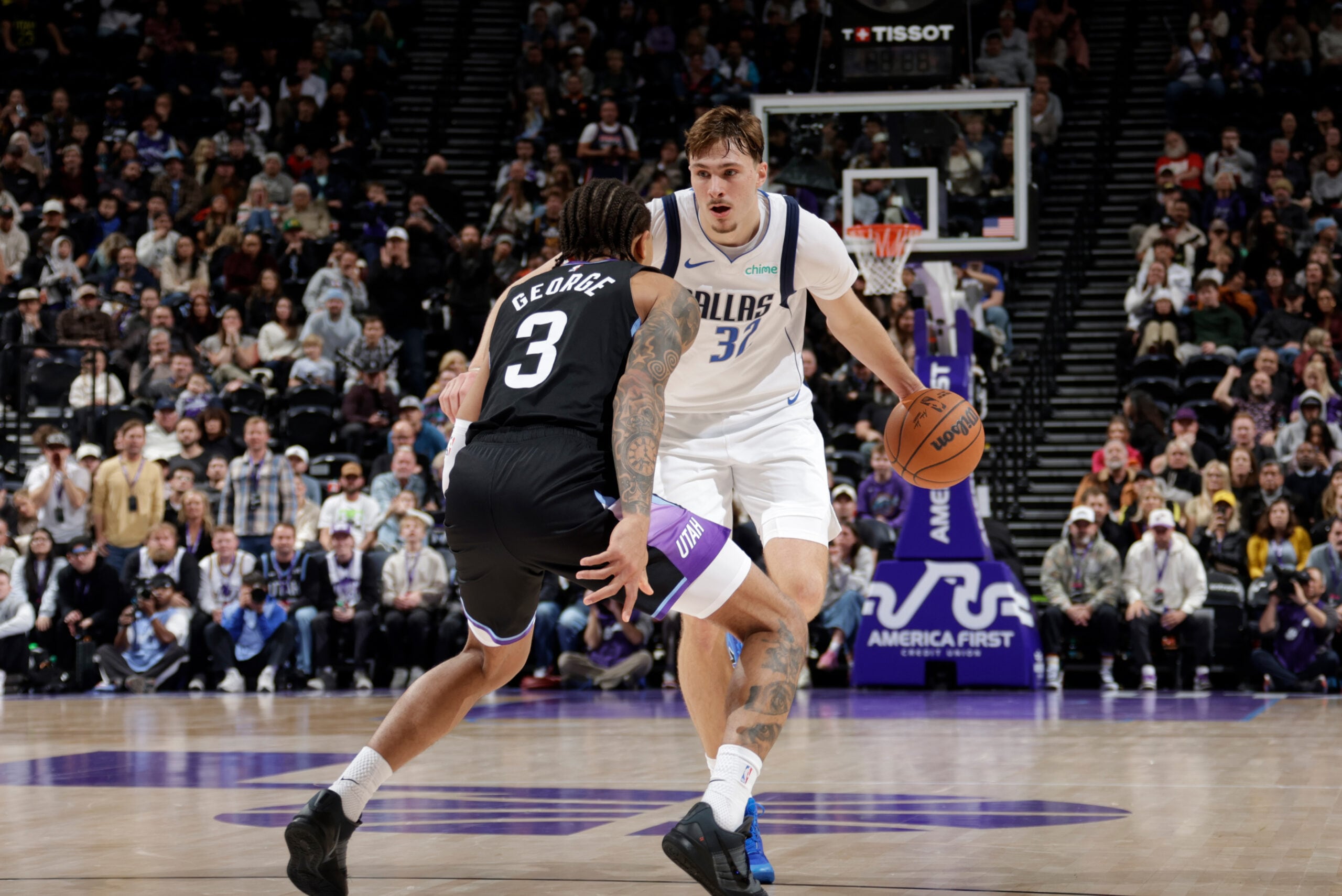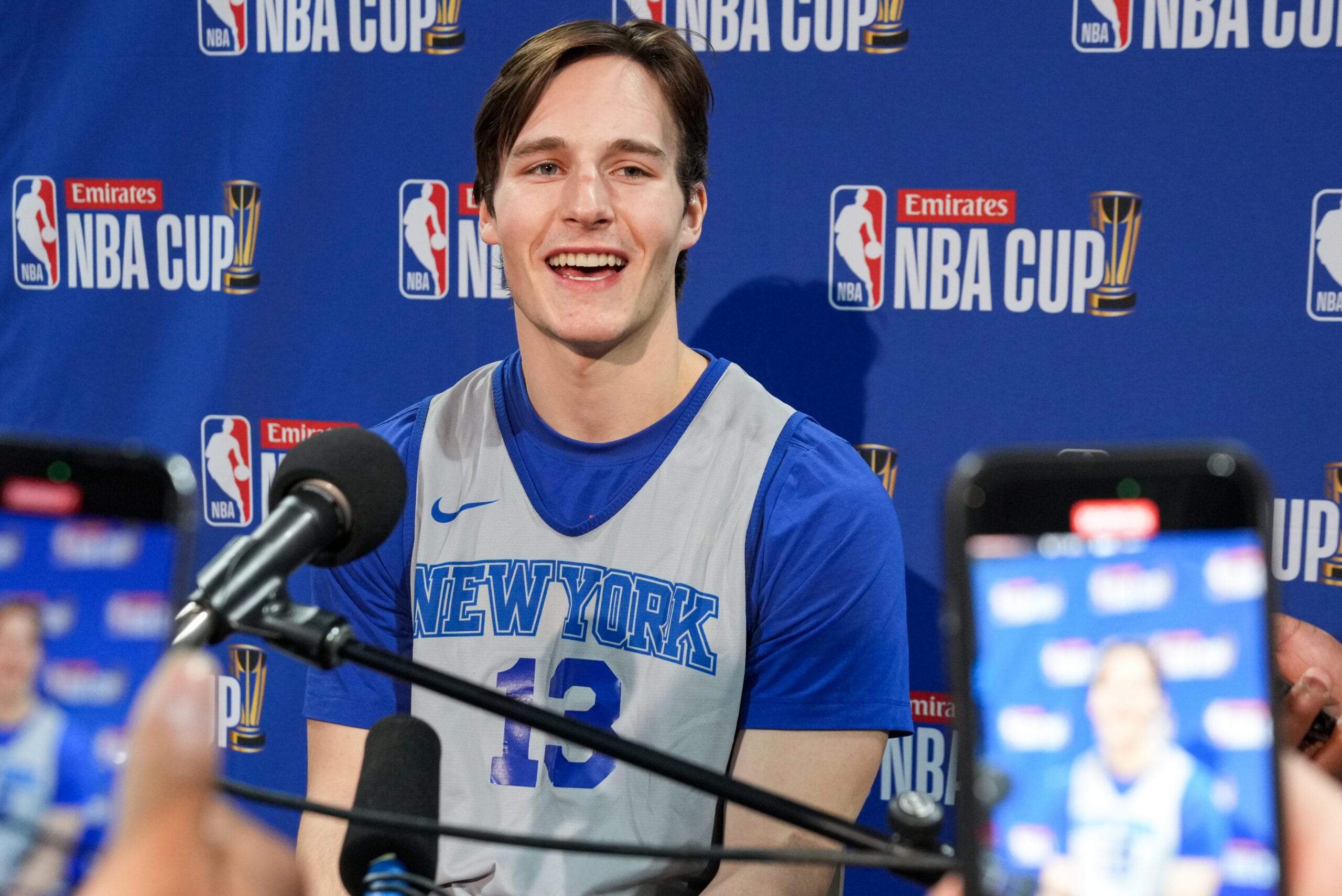
Devin Booker and the Suns lead the NBA in percent of last season’s minutes returning for 2021-22.
The Atlanta Hawks and Phoenix Suns are running it back.
Both the Hawks and Suns went further than expected in the 2021 playoffs. Atlanta basically ended the Philadelphia 76ers as we know them and, in Trae Young’s third season, advanced to the Eastern Conference finals. Phoenix, meanwhile, went from a 10-year playoff drought to The Finals.
Feeling good about where they are and with young players who should continue to get better, the Hawks and Suns have kept their squads together. They rank first and second in the percentage of last season’s (regular-season) minutes that are still on the roster.
Nine of the Hawks’ top 10 guys in 2020-21 regular-season minutes are back, with the exception being Tony Snell (992 minutes), who was 12th on the team in total minutes in the playoffs and left in free agency. The Suns have retained the top eight guys in regard to regular-season minutes, including all five players from the starting lineup that led the league in both regular-season and playoff minutes last season (1,092 total).
Five of the 12 returning Hawks, including Young, are first round picks still on their rookie contracts. The same goes for four of the 11 returning Suns. Both added critical veteran contributors last season, but they both have improving young cores.
Seven of the eight teams that reached the conference semifinals rank in the top nine in continuity this year, with the Brooklyn Nets (26th) being the lone exception. That shouldn’t be surprising. Why mess with a good thing?
Here are all 30 teams ranked in regard to what percentage of last year’s minutes they currently have under contract, with one week to go before rosters must be finalized for the regular season.
% of 2020-21 regular-season minutes currently under contract
| Rank | Team | 20-21 Min. | Ret. Players | Ret. Min. | %Ret.M |
|---|---|---|---|---|---|
| 1. | Phoenix | 17,480 | 11 | 15,193 | 87% |
| 2. | Atlanta | 17,405 | 12 | 14,841 | 85% |
| 3. | Denver | 17,480 | 14 | 14,763 | 84% |
| 4. | Utah | 17,355 | 11 | 14,539 | 84% |
| 5. | Philadelphia | 17,430 | 11 | 14,365 | 82% |
| 6. | Dallas | 17,305 | 12 | 14,088 | 81% |
| 7. | LA Clippers | 17,280 | 11 | 14,011 | 81% |
| 8. | Minnesota | 17,405 | 11 | 13,931 | 80% |
| 9. | Milwaukee | 17,330 | 10 | 13,710 | 79% |
| 10. | Sacramento | 17,305 | 13 | 13,492 | 78% |
| 11. | Memphis | 17,405 | 12 | 13,397 | 77% |
| 12. | New York | 17,430 | 10 | 13,095 | 75% |
| 13. | Indiana | 17,455 | 11 | 13,032 | 75% |
| 14. | Golden State | 17,305 | 11 | 12,490 | 72% |
| 15. | Cleveland | 17,430 | 11 | 12,540 | 72% |
| 16. | Oklahoma City | 17,355 | 10 | 11,801 | 68% |
| 17. | Charlotte | 17,355 | 9 | 11,165 | 64% |
| 18. | San Antonio | 17,480 | 10 | 11,171 | 64% |
| 19. | Houston | 17,305 | 11 | 10,311 | 60% |
| 20. | Boston | 17,380 | 9 | 10,351 | 60% |
| 21. | New Orleans | 17,430 | 10 | 10,186 | 58% |
| 22. | Portland | 17,305 | 9 | 10,060 | 58% |
| 23. | Detroit | 17,430 | 10 | 10,103 | 58% |
| 24. | Toronto | 17,305 | 9 | 9,951 | 58% |
| 25. | Miami | 17,380 | 10 | 9,718 | 56% |
| 26. | Brooklyn | 17,405 | 8 | 9,239 | 53% |
| 27. | Washington | 17,405 | 9 | 9,063 | 52% |
| 28. | Orlando | 17,330 | 11 | 7,749 | 45% |
| 29. | Chicago | 17,380 | 7 | 7,436 | 43% |
| 30. | L.A. Lakers | 17,455 | 3 | 3,970 | 23% |
Ret. Min. = Minutes played by players still on roster (same contract or re-signed)
Through Oct. 10, 2021
And then there were three

Russell Westbrook is one of many new faces in Los Angeles, where only three players are returning this season.
Last year, the Los Angeles Lakers saw the lowest rate of continuity for a defending champion since the Chicago Bulls’ dynasty broken up in 1998. This year, the Lakers have turned their roster over even more.
Two players – Dwight Howard and Rajon Rondo – have returned from the 2020 championship team after a year away. But the Lakers have returned just three of the 19 guys who played for them last season: LeBron James, Anthony Davis and Talen Horton-Tucker.
They traded three rotation guys for Russell Westbrook, let several more walk in free agency, and parted ways with Marc Gasol via a trade back to Memphis. James and Davis have been (and remain) their best players, but for what was the league’s No. 1 defense last season, that’s a lot of corporate knowledge walking out of the building.
And it’s an amount of turnover we haven’t seen in the last 16 years. The last teams to have fewer than four players who played for them the previous season were the 2004-05 Atlanta Hawks (2) and Orlando Magic (3).
Wesley Matthews remains an unsigned free agent, so the Lakers could (eventually) add a fourth guy who played for them last season. But for now, it’s just James, Davis, Horton-Tucker and a whole lot of new (but old) faces.
Success leads to continuity … and more success?
When we look back, we can reverse the math and calculate the percentage of a team’s total minutes that came from players who played for the same team the season prior. And in that regard, the Lakers might not top last season’s Detroit Pistons, who got only 14.2% of their minutes from players – Sekou Doumbouya, Blake Griffin, Svi Mykhailiuk and Derrick Rose – who played for them in the 2019-20 season. That was the lowest rate (by a healthy margin) of the last 10 years, and all four of those guys are no longer with Detroit. It’s safe to say that general manager Troy Weaver did not like the roster he inherited a year and a half ago.
The next lowest rate of the last 10 years belongs to last season’s Houston Rockets, who got just 20.5% of their minutes from (six) guys who were on the roster the season prior. (Two of those six – Eric Gordon and Danuel House Jr. – are still in Houston.) While the Pistons were coming off a 20-46 season when Weaver took over, the ’19-20 Rockets were 44-28 (0.611). On average, teams that won at least 60% of their games in Year 1 have gotten 70% of their minutes from returning players in Year 2.
As you’d imagine and as evidenced by this year’s rankings, there’s a correlation between a team’s success and how many players it retains for the following season. But does continuity lead to improvement?
Over the last 10 years, there is a small correlation between the percentage of a team’s minutes that have come from *returning players and that team’s jump (or drop) in winning percentage from the previous season.
* Returning players = Players who played for the team the previous season. Kevin Durant wouldn’t count for Brooklyn last season, because he didn’t play in ’19-20.
Last season’s Rockets and the 2019-20 Warriors are good examples of low continuity and big drops in winning percentage. The best example of high continuity leading to a big jump in winning percentage was the 2014-15 Atlanta Hawks, who got 88% of their minutes from returning players (it helped that Al Horford was healthier) and won 22 more games than they did the year before.
Additional notes
• If you remove Ben Simmons’ 1,877 minutes from last season, the Sixers would fall from fifth (82%) to 15th (72%) in continuity.
• Removing John Wall’s 1,288 minutes would drop the Rockets from 19th (60%) to 26th (52%).
• The Nuggets and Clippers are both in the top 10, but will obviously be affected by injuries to Jamal Murray (1,704 minutes last season – fourth on the team) and Kawhi Leonard (1,772, third).
• Before opening night, the Warriors will need to make a few roster cuts that could include returning players.
• It’s all about the stars in Brooklyn, but the Nets are the only team that ranks in the bottom five in both the percentage of last season’s minutes that came from players who played for the team in 2019-20 (26th) and the percentage of last season’s minutes that came from players who are still on the roster (26th). They’ve said goodbye to five of the 10 guys who played at least 600 minutes for them last season, though they can expect to get more minutes from a few guys – LaMarcus Aldridge, Blake Griffin and James Harden – who joined them after the season started.
• The Pelicans (22nd and 21st), Magic (24th and 28th) and Wizards (25th and 27th) also rank in the bottom 10 in both.
• Three teams rank in the top 10 in both the percentage of last season’s minutes that came from players who played for the team in ’19-20 and the percentage of last season’s minutes that came from players who are still on the roster: The Mavs (seventh and sixth), Clippers (10th and seventh) and Jazz (second and fourth).
• Overall, the league average is 67% of last year’s minutes still on the roster, which is the same rate from our overview (at the start of training camp) last year and much higher than the league-shifting summer of 2019 (56%).
* * *
John Schuhmann is a senior stats analyst for NBA.com. You can e-mail him here, find his archive here and follow him on Twitter.
The views on this page do not necessarily reflect the views of the NBA, its clubs or Turner Broadcasting.










